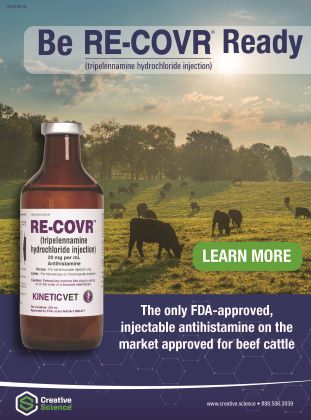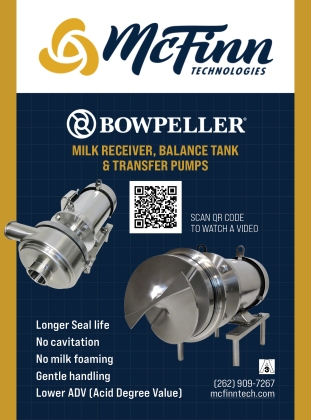Expert Insights on Manure Management

Expert Insights on Manure Management
Each day, livestock produce thousands of pounds of manure. In fact, the estimate for a single dairy cow produces approximately 120 pounds or 14 gallons of wet manure per day. Properly managing that manure production and recognizing that manure is far more of an asset than a liability, is important on the part of every producer.
The American Dairymen connected with Kurt Grimm, CEO & Sales Manager at NutraDrip, to gain his expert insights into what today’s manure management systems look like and the innovations that are impacting the industry.
American Dairymen:
What types of advancements have been complete with regard to manure management in recent years?
Grimm:
We have been working on two major advancements. Manure separation of solids from liquids, without polymers, to a 120 micron level. This has allowed us to adapt a subsurface drip irrigation system then to deliver manure during the growing season underground.
I think as a whole industry, we are looking at the ability to separate solids from liquids which allows growers to remove phosphorus, which typically is the high nutrient that is causing problems. And so the more solids we can get out of liquid, the better job we can do. We’re going to have less runoff issues and less leaching issues in regards to manure. So the technology that we’ve been working with is new in the last couple years.
We brought in some equipment from Italy that is a mechanical separator which is a second stage after a horizontal or vertical screw press and it has a 25 micron screen in it. It does the similar job of a centrifuge but at a much lower price point and is much less energy-intensive. . It is going to smell like manure, but have most of the nitrogen and potassium in it, but after removing about 30% to 50% of the phosphorus. Inject the clean product through a drip irrigation system or center pivot irrigation system. It’s basically an advanced separation equipment that is a step beyond what has been available in the last couple years.
Another big improvement that we’ve made in the last couple years is taking that clean liquid and instead of applying it via a dragline or center-pivot, we’ve adapted a subsurface drip irrigation system to be able to blend manure with water and inject it under the ground during the growing season for the growing crop instead of applying it in the fall or spring of the year.
American Dairymen:
What are the biggest challenges and/or concerns that dairy producers face as it relates to manure management?
Grimm:
The application of manure in the fall and spring present challenges every year with weather, wet fields, compaction, leaching and runoff concerns.
Most dairy producers concerns are about the timeliness of being able to complete their manure application in a timely manner in the fall. For example, in the state of Minnesota the state continues to move the date up and threatens to move it up further which narrows the window that they’re going to have for application. Dairy producers are looking for ways to apply manure during the season so that they don’t have to do it after the growing season. A second challenge for producers is the requirements to put in feet pad runoff lagoons or leachate lagoons. It’s very low in nutrient content. It’s mainly just water but there’s a little bit of nutrients in there. And so it doesn’t have enough value to be cost-effective to be applied as a normal manure.
And there’s no real monetary return to the dairy because there is not enough nutrient value there for the producer to pay for it.
One of the challenges with the leachate material is that the odor is bad and so the ability to apply leachate through a permanent system underground again gives a great benefit as it alleviates one of the big issues which is, and always has been, the odor. As the population moves farther out into the country, we get more and more of our city neighbor folks close to us and the challenge of applying manure without upsetting neighbors continues.
Finally, the overall cost of application is also challenging. It has become so much more expensive –including the cost of equipment and the cost of labor. So looking for a less labor-intensive and less equipment intense method to apply that manure is something that growers are looking for.
American Dairymen:
What does your company offer in this area?
Grimm:
We are working with manure separation equipment that can cost effectively ‘clean’ manure to go through the dripline. Then the design, installs and maintains a subsurface drip irrigation system that can both be used to irrigate and apply manure to the growing crop.
One of the things that this does is it allows us to spoon-feed that manure in as a fertilizer while the crop is growing and so we’re really excited about the possibility of being able to increase efficiency, reduce runoff, and reduce leaching. When you think about the way that manure is applied today, it’s applying 10,000 to 20,000 gallons per acre. It’s put out there in October and November and that crop doesn’t use that nutrient for six to eight months. If we can apply that manure once a week during the growing season, we’re going to be so much more efficient and so much more environmentally friendly.
We’re also looking at what the greenhouse gas savings that’s going to be in conjunction with that. There’s been some studies done in California already on this that’s verified that there’s up to a 90% reduction in greenhouse gas compared to the traditional ways that they were applying manure in California. So there’s potential substantial savings in greenhouse gasses with this application method as well.
American Dairymen:
When evaluating their manure management processes/procedures, what should producers focus on? And how do they properly evaluate if their manure management system is ideal for their specific dairy operation?
Grimm:
They should look at the cost of application, environmental concerns, expansion possibilities, and how effective are their current methods at feeding a crop.
Looking at economics, labor constraints, land availability, and technical know-how of their team are all things to consider.
There’s a big spread between what producers are having to pay to have their manure applied. Is manure a liability or an asset to that producer? Many dairy producers seem to be counting it as a liability and it shouldn’t be. Manure has tremendous value and needs to be valued as an asset. And so how do we get the nutrients valued properly so that that manure could be spread over more acres. Could it be shared with neighboring producers?
There are challenges with being able to spread manure out over a larger geography and how effective are they at using their manure to feed a crop. That’s always something worth looking at –how can we better utilize that manure to feed the crop and to raise higher-quality crops and get a higher yield.
We’ve got to look at the economics of this system. What are the labor constraints? How much hired help were they having to bring in as subcontractors to get their manure applied? How much land do they have available? Are the phosphorus levels rising in their soil? They need to be able to spread that phosphorus out over more acres. What are the technical know-how of the team members they have to be able to operate some of this advanced equipment? In looking at all of the aspects of how that manure is being applied – can it be applied better?
American Dairymen:
What are signs that a producer’s manure management system is not working for them?
Grimm:
One of the first questions I like to ask: Is manure an asset or liability to the producer? It should be an asset but many operations treat it like a liability. It’s about looking at the value in manure and maximizing the return on that value through better crop management by spoon feeding manure to the crop during the growing season.
It’s going to be different for every producer but a couple key things to look for are water and nutrient levels in the soil overtime. Are things getting out of balance because we know that if one nutrient gets too high, it’s going to block other nutrients being taken into the plants and create agronomic problems..
American Dairymen:
Do you have any other advice for producers who may be looking at incorporating new manure management processes/procedures into their operations?
Grimm:
There are a lot of great options out there. Understand the options and not only what the upfront cost will be but also long-term operation and maintenance cost. Does the system still provide a positive return to the farm without government subsidies or credits? What if those credits go away?
There are so many technologies available to producers to handle manure and to separate manure. There are a lot of new technology that’s been introduced in the last five to 10 years that separates liquids from solids, but does it at an extremely high capital cost, which means producers are relying on things like carbon credits and government funding to help pay for them.
And what is the long-term operational cost of those systems going to be? Will they be viable and cost-effective after those subsidies are gone or will the operation cost be so high that the producer won’t be able to sustain them? We’re looking for systems and processes that are self-sustaining – that’s truly the meaning of sustainability. It has to lower the cost of operation. So we’re looking for solutions that are going to lower that cost of operation, not only today but into the future and give them a viable alternative for how they’re applying their manure.
By Maura Keller
For Cattle Industry News check out the webpage below
Or if you enjoy the Outdoors. The Iowa Sportsman might be a great page to check out.



